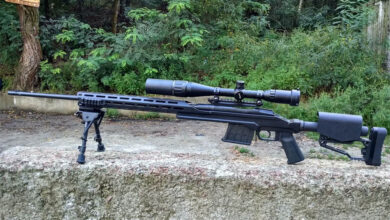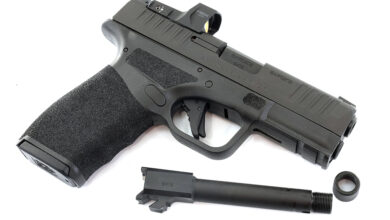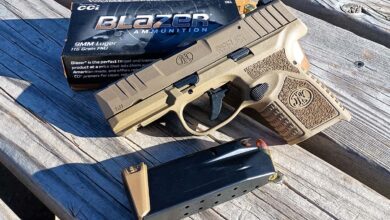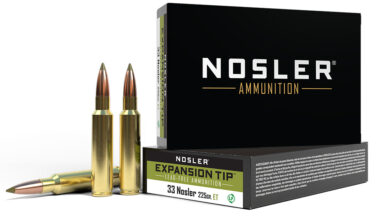Silencer Shop: Cracking The Code

Here we look at how Dave Matheny of Silencer Shop used his background in technology to hack the suppressor market.
Firearms innovation comes in all sorts of packages. Sometimes, a design with a particular aim, like the 6.5 Creedmoor as a factory-produced long-range round. Other times it’s happenstance, like John Browning conceptualizing excess cartridge gas to cycle rounds when observing muzzle blasts pushing grass.
It’s difficult to say where Silencer Shop falls exactly on this spectrum, but the impact of the leading suppressor retailer is undeniable. Over the short course of nearly 15 years, the company has revolutionized the way federal NFA paperwork is processed. It’s streamlined how the Federal Government manages the information waterfalling into its offices. And, perhaps most importantly, it’s done its fair share to popularize and mainstream today’s most voguish gun accessories.
Not bad for a company originally conceptualized as a side hustle by a dude well outside the gun sphere.
Programmed For Success
Dave Matheny likes to talk about computer code. Even more than discussing it, he loves to write it. No surprise for a fellow who dedicated the early part of his career to BIOS and firmware development for such bigwigs as Intel. It’s a winding road from top-shelf geek to sultan of silencer retailing, so, how did the founder and now CEO of Silencer Shop pull it off?
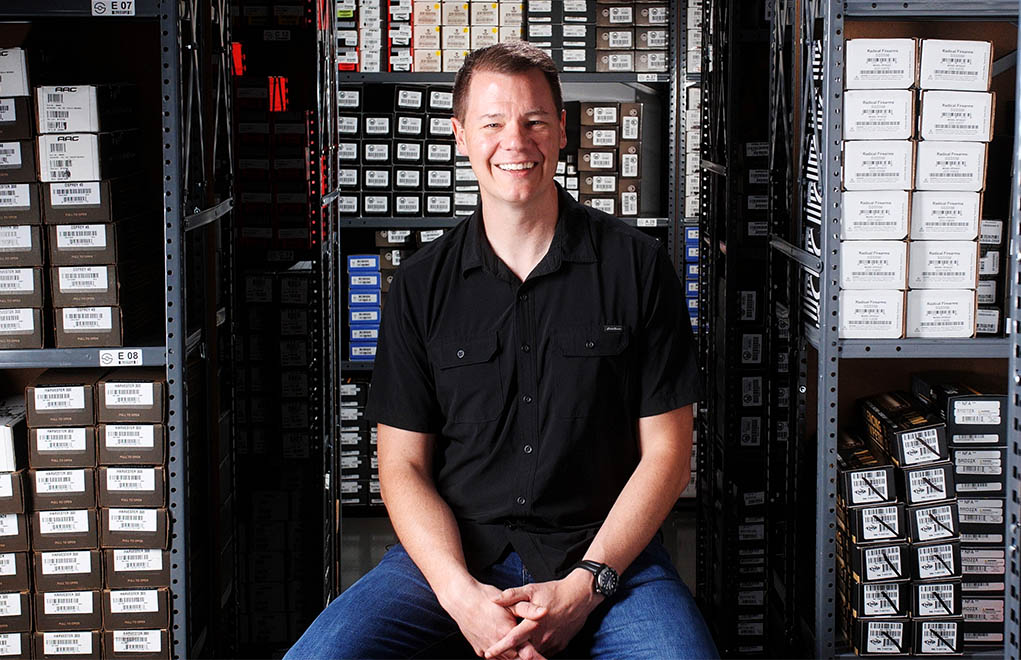
To understand that you’ve got to go back to the late 2000s and a hunting trip Matheny took with his son.
“He was born def in one ear, but perfect hearing in the other,” Matheny said. “Taking him out to the blind when he was young was difficult because he was everywhere and always taking off his ear pro. It wasn’t a good situation. I wanted to make sure to protect the hearing he had, so I started looking into suppressors.”
Like so many in the bad old days, Matheny didn’t find the process of procuring a suppressor an enjoyable experience. However, it wasn’t the load of paperwork and $200 tax stamp we think of today that got his goat. It was less-than-prepared retailers.
On his first suppressor purchase, the retailer went out of business after he had finished the usual rigmarole. In the end, Matheny had to chase the merchant down at his storage locker and demand his suppressor—on the last day that it could still be legally transferred to him.
Undeterred, he tried again.
This time it was somewhat different with a solid and established business. However, not all was well. The proprietor had positively no interest in helping Matheny navigate the paperwork. Rejected applications, lengthened wait times and nowhere to turn, after the purchase the programmer knew he could do better for others in his situation.
With an eye toward education and efficiency, Matheny launched a small in-house suppressor retailing business. His initial goal in 2010 was to move 10 cans or so a week, offering an online retail experience that walked the customer through the process and streamlined the paperwork. When the actual numbers were a magnitude larger—$19,000 the first month, doubling every month for six months—Matheny knew he had struck a much richer vein than he expected.
Reluctantly, he bid farewell to code—at least as his full-time gig—moved the business into an official building and was off to the races in 2011. Everything went smoothly until the second term of the Obama presidency.
Cracking The Suppressor Retail Code
In its early days, Silencer Shop succeeded by making suppressor purchases simple. This meant wrangling much of the paperwork and making the most uncomfortable aspect of the process the wait. This was especially true for NFA items purchased as a trust, which didn’t require fingerprints, photos, CLEO (Chief Law Enforcement Officer) clearance or, Matheny discovered, a purchaser’s signature on the 4473 form. You bought a suppressor, formed a trust, sat back until the paperwork cleared then picked up your can.
This all changed in 2016 with Rule 41F. Essentially, this brought a trust’s process of buying a suppressor much more in line with an individual’s experience. In short, everyone named in a trust would need to submit fingerprints and photos; the only good part, CLEO clearance simply became a notification to the official that you were buying an NFA-controlled good.
Even with this concession—good for those in the deepest blue pits of the country—Matheny saw the trouble the ATF rule change could cause.
“It had the potential to kill the industry,” he said.
The barriers to entry and the time invested in getting over them were just too much for average gun owners to conquer. For instance, for those of you who don’t have NFA items, where do you go to get fingerprinted? A tough question for the unanointed to short-barreled rifles and suppressors, and Silencer Shop understood this. Matheny also knew he had a competitive advantage compared to the rest of the suppressor industry—his background in technology.
From this, Silencer Shop’s kiosk system was born.


Essentially, the relatively small piece of digital wizardry is placed in a dealer’s locale and collects and transmits all the information—fingerprints, photos, paperwork—directly to the ATF and gets the ball rolling. Yeah, it didn’t turn back the clock to simpler times, but it made the then-new process much more palatable. It’s a heck of a lot easier getting your wife or buddy to go to a kiosk for an hour to form a trust than it is to beg them for weeks, perhaps months to get their passport photo taken. And as quickly as the G-men tilted the playing field, Matheny leveled it again with his system.


He had 300 kiosks in shops the same year as the rule change and those who adopted the technology saw their suppressor sales increase tenfold. With that sort of cut bait in the water, other dealers were quick to bite too. As for the ATF, well, funnily enough, they were pretty accepting of Matheny’s system.
“The sticky point, weirdly, was the digital signature,” he said. “They accepted everything else right off, but it took around 6 to 8 months of pushing to get them to accept the signatures. Looking at it now, it is really funny, given digital signatures for anything are standard.”
Future Shock
At this point, Matheny figures Silencer Shop has 3,000 kiosks nationwide. Maybe it doesn’t quite hit his goal of one within an hour of any buyer, but it’s pretty dang close. He’s helped the ATF streamline their processes, programming and getting the department to adopt the Form 4 bar codes that automatically input the form’s info into the agency’s database. But what does the future hold for one of the most technology-minded companies in the gun world?
While he didn’t let anything slip, Matheny hinted there are innovations on the horizon—there always are at Silencer Shop. However, his concerns when it comes to suppressors, are much more analog. In particular, their acceptance.
“The ASA (American Suppressor Association) did a poll a while back where it found that suppressors have an 80-percent negative response,” Matheny said. “Guns were split something like 50/50, so that gives you an idea of where we stand.”
This is a big hindrance for those—such as Matheny himself—who want to see buying the device no more taxing than purchasing a flashlight. And it will happen, in his opinion, but we’re at the start of a long road.


The biggest issue facing suppressors, from his perspective, is even among the majority of gun owners, they’re somewhat foreign. The hurdles put in front of ownership mean many have never seen a suppressor in person and fewer have shot with one.
Well-meaning as they’ve been, recent efforts to deregulate suppressors are premature and perhaps counterproductive, from Matheny’s perspective. While he’d celebrate if the bureaucratic walls that thwart suppressor ownership came tumbling down, he doesn’t believe the popular will exists to safeguard a clear path to buying the device. Take down the paperwork and he thinks—like a perverse game of whack-a-mole—a different, maybe more onerous barrier of entry will pop up. Perhaps it takes the form of a $500 tax stamp, or a mandated year waiting period to receive a can after buying one or something worse.
“I feel like it will be deregulated eventually, but how soon this happens depends on market growth,” he said. “Once we hit a tipping point, where say half of gun owners own one, they will get deregulated.”
Ownership and familiarity are the only shortcuts to the road of easy suppressor deregulation. To that end, Matheny is doing his part. Silencer Shop and its proprietor’s innovations have done plenty to flatten the bumpy road to buying a silencer. And there is little sign either is even close to finished hacking this firearm niche’s code.
More On Suppressors:
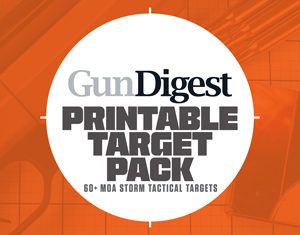

Next Step: Get your FREE Printable Target Pack
Enhance your shooting precision with our 62 MOA Targets, perfect for rifles and handguns. Crafted in collaboration with Storm Tactical for accuracy and versatility.
Subscribe to the Gun Digest email newsletter and get your downloadable target pack sent straight to your inbox. Stay updated with the latest firearms info in the industry.
Read the full article here

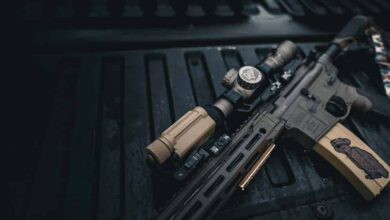
![Range Testing The New EOTECH Vudu X Series 1-6X Rifle Scope [VIDEO] Range Testing The New EOTECH Vudu X Series 1-6X Rifle Scope [VIDEO]](https://firearm-discounts.com/wp-content/uploads/2025/01/Tom-Vudu-390x220.png)
